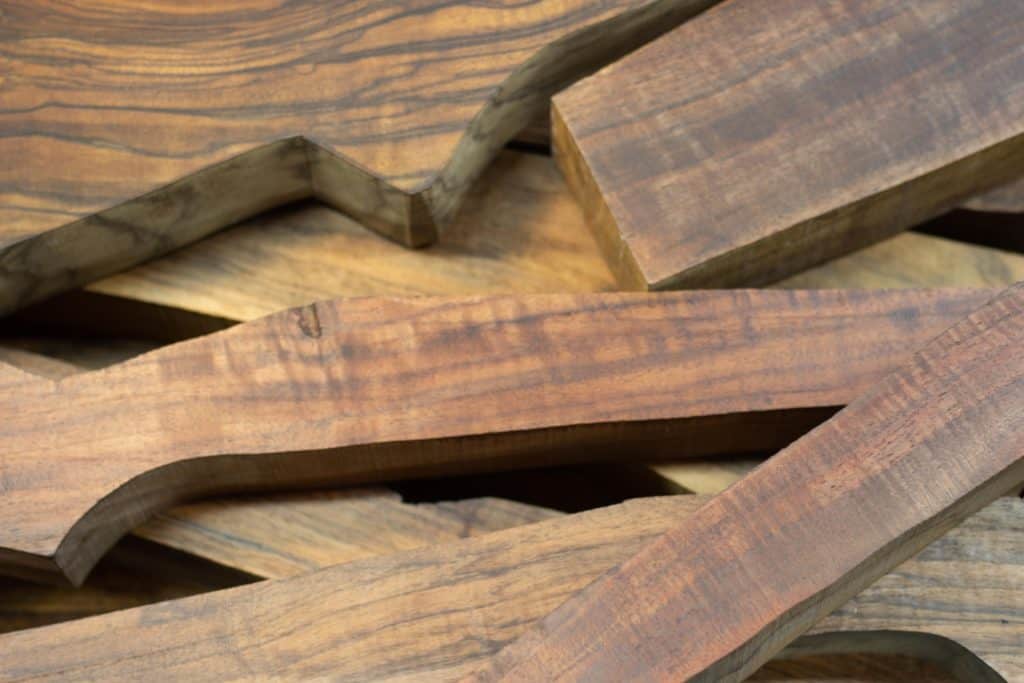
If you’ve spent any amount of time looking at stock blanks, you will know that there is no such thing as “just walnut.” French, English, Black, Bastogne, Turkish, Italian, and Claro are all names you will see pop up. So what’s the difference? What is Claro Walnut? Is there a difference between Turkish and Circassian?
Four species of walnut are used regularly for gunstocks; Black, English, Claro, and Bastogne. All of the other names you hear fall under one of those four species.
Wood has been used to stock firearms since the beginning. Hardwoods have prevailed over softwoods, lasting centuries when taken care of properly. Countless types of wood have been utilized over the years, but walnut has come out on top time and time again.
I have migrated this article over to my shops blog, you can view the entire article for free here https://www.highlandcustomllc.com/blog/walnut-for-gunstocks
Hello, I have an upcoming stock project. I am looking for a company that inlets stock blanks. I have done some in the past, but my Dad who was a stockmaker always handled that. I believe he may have referred to it as semi inletting. The blanks would come back roughly machined and still had to be completely fitted to the action. Do you have a go-to company that you could recommend ?
Thank you – Curt
I, unfortunately, don’t have a company that I use frequently. Most reputable gunsmiths should be able to inlet the blank for you.
Very informative article. I have a large bore dangerous game rifle in stocked in an Exhibition grade English, a father/son pair of break-action rifles in a 4X Exhibition grade Turkish, and have a family heirloom 45-70 headed to be stocked in Exhibition Turkish. I never knew the ins/outs of the blanks I’ve purchased. I just always relied on the seller to steer me in the right direction for a given project. So far…so good.
Thanks Jeffery! It looks like you have selected your wood very well so far! If you’re using Evan for all of these builds you are in good hands, he knows his wood!
Really nice article and a lot of good information on the wood. I just placed an order for an
1874 Hartford 45-70 from C Sharps.. Hoping for a nice piece of wood and who knows you may be the guy working it. I know a lot of the black walnut comes out of Missouri. Really enjoy reading your articles.
Mark,
Glad to hear that! There’s a 50/50 chance I’ll end up stocking it. I’ve been digging deep into the wood that goes into stockmaking so stay tuned, lots more to come!
Hi Kurt! I’m marks brother and I also have a C Sharps 1874 coming that I ordered back in October so it should be coming up soon. I hope you get to do mine. I ordered semi-fancy wood so hoping it has some good grain. Who knows maybe you will get to work on my order. Keep the articles coming, Mark and I are reading everyone of them.
Thanks for reading Gary! The 1874 Sharps is a lot of fun to go out and shoot, and even better to build.
Really enjoyed the article on the different walnut for gun stocks. Have an 1874 in 50/70 from C Sharps ordered now. Hard to beat the beauty of black walnut on a Sharps or any firearm. Thanks for a good read.
Amazing article! I have three air rifles (here in the UK) with bespoke hand made walnut stocks. Two are american black and one is Turkish – they all look stunning and are made in the Tyrolean style and used in the field . A lot of people in my hunting community argue over how to care for walnut. I’ve always followed the advice of using a commercial product revolving around boiled linseed oil and here we have CCL oil and TS-95 as variants (with different dryers in them etc) and to build the finish up over several applications. I was wondering your thoughts on a good oil for a nice traditional oiled finish? Would you agree with this, have other suggestions? Is there anything you’d recommend to stay away from for walnut in terms of oiled finishes?
Jason, traditionally boiled linseed oil has been great. While it still does the job, there are many better options out there. I’m currently using a combination of a sealer and teak oil. If you can find an oil-based finish used for boat applications, they do great for keeping moisture out. Sounds like some great air rifles you have there!
Thanks Kurt – Keep up the good work!!!! I’ll stick with BLO as I like the results and it seals really well where I can see the rain sitting on top of the stock and not penetrating. A wipe down and around two applications of BLO a year seems to so a great job (at least so far!!!). Yes, I have some lovely air rifles and I’m lucky. Over here in the UK getting blanks large enough for air rifle stocks is becoming harder to source (much bigger than shotgun blanks of course). I hope you’re not struggling as much as some stock makers over here are suggesting!
Kind regards
Jason